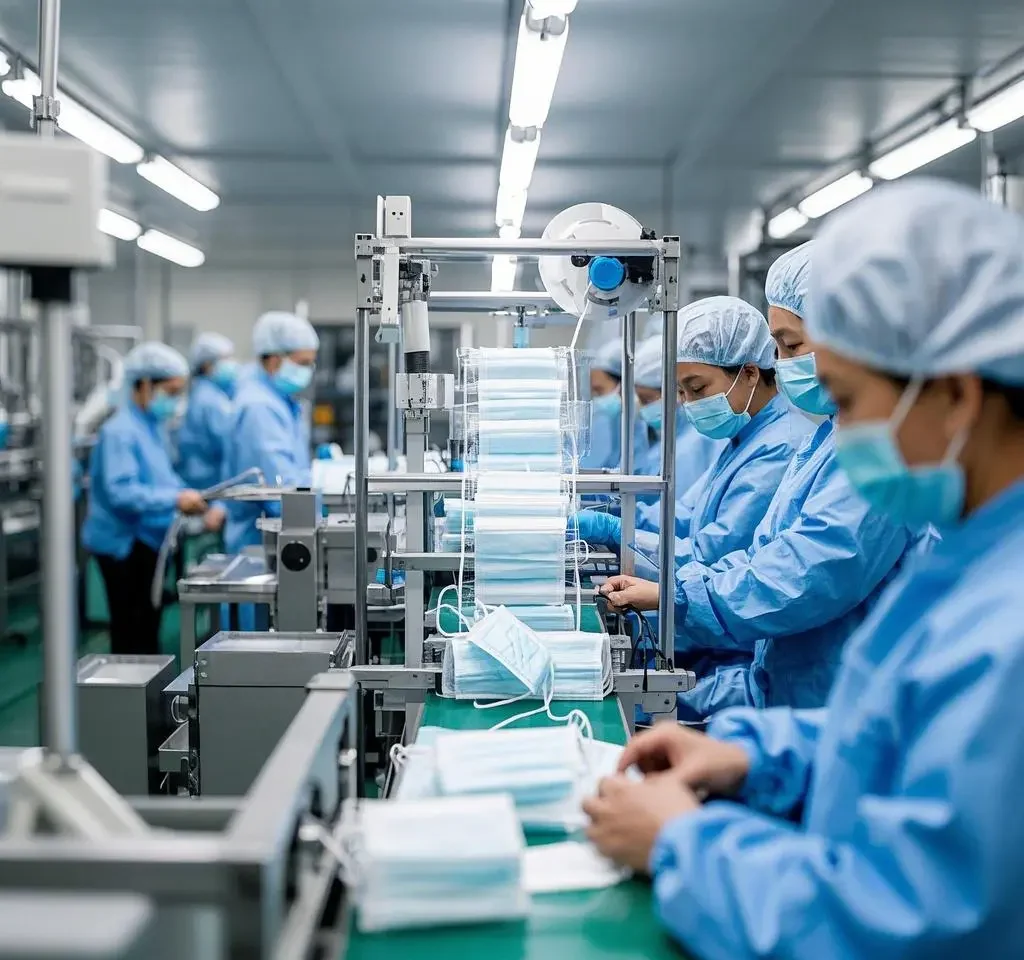
Nonwovens’ versatility stems from key attributes: lightweight, durability, breathability, and customizable functionality. Here’s how they revolutionize sectors:
- Healthcare & Medical
- Infection Control: Surgical gowns, N95 masks, and isolation barriers use meltblown layers to filter 95%+ of particles ≥0.3 microns.
- Patient Care: Disposable drapes, wound dressings, and incontinence products balance hygiene and comfort.
- Personal Care & Consumer Goods
- Hygiene Solutions: Wet wipes, feminine care products, and baby diapers rely on nonwovens for softness and absorbency.
- Household Use: Reusable shopping bags, mop pads, and furniture upholstery blend convenience with eco-friendly design.
- Agriculture & Environmental Protection
- Precision Farming: Crop covers enhance germination while reducing water evaporation; biodegradable mulch films minimize plastic waste.
- Waste Management: Geotextiles stabilize soil erosion, and filtration systems purify industrial wastewater.
- Advanced Manufacturing & Technology
- Filtration Systems: Air/liquid filters in HVAC systems and automotive engines utilize meltblown nanofibers.
- Next-Gen Electronics: Nonwovens integrate with sensors for smart textiles, wearable devices, and lithium-ion battery separators.
Sustainability-Driven Innovations
To address environmental challenges, the industry innovates:
- Bio-Based Materials: PLA nonwovens decompose in 6 months under composting conditions, reducing petroleum dependence.
- Closed-Loop Recycling: Chemical recycling processes (e.g., hydrolysis) break down PP/PE nonwovens into monomers for reuse.
- Performance Enhancements: Antimicrobial finishes (e.g., silver nanoparticles) and flame-retardant coatings extend product lifespans.
- Global Market Trends & Future Prospects
- Market Growth: Valued at $62.3 billion in 2023, the global nonwovens market is projected to reach $89.5 billion by 2030 (CAGR 5.5%, Grand View Research).
- Regional Dynamics: Asia-Pacific dominates (55% market share), driven by healthcare and hygiene demand, while Europe leads in bio-based adoption.
- Emerging Frontiers:
- Energy: High-strength nonwovens for wind turbine blades and solar panel substrates.
- Space Exploration: Heat-resistant composites for spacecraft thermal protection systems.
Conclusion
Nonwovens represent a cornerstone of modern manufacturing, seamlessly blending performance with sustainability. As technology progresses, these materials will continue to redefine industries—from healthcare to aerospace—while prioritizing environmental stewardship.

